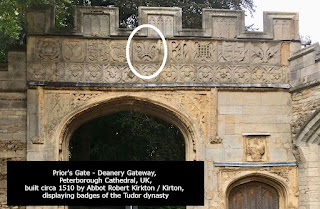in the Delta 98 Den Haag collection:
an antique wax seal stamp with a coat of arms of a 1600-1750 era design, with on the shield / escutcheon and as crest
three ostrich feathers
the ostrich feather is an important heraldic symbol due to it's occurence in the heraldic devices of the English Royal family since the time of Edward the 3rd (1312-1377), it symbolised faithfulness, magnanimity, generosity and justice
we relate this seal and coat of arms to the Dutch family
Geesteranus
with a coat of arms of three ostrich feathers emerging from a pot, a family name that, after becoming extinct, went on in the name
Maas Geesteranus
possible other ways of writing, or documented:
Geisteranus, Gheisteranus, Geesteren
and to John of Bohemia / Jean de Boheme et de Luxembourg,
According to
the longstanding but now discredited legend, the Black Prince obtained the
badge from the blind John I of Bohemia, against whom he fought at the Battle of
Crécy in 1346. After the battle, the prince is said to have gone to the body of
the dead king, and taken his helmet with its ostrich feather crest, afterwards
incorporating the feathers into his arms, and adopting King John’s motto, “Ich
Diene”, as his own. The story first appears in writing in 1376, the year of the
Black Prince’s death. There is, however, no sound historical basis for it, and
no evidence for King John having used either the crest (he actually bore a
crest of vultures’ wings) or the motto.
Since a key factor in the English army’s victory at Crécy was the use of
Welsh archers, it is also sometimes said to have been Edward’s pride in the men
of Wales which led him to adopt a symbol alluding to their assistance. The
German motto “Ich Dien” (“I serve”) is a near-homophone for the Welsh phrase
“Eich Dyn” meaning “Your Man”, which might have helped endear the young Black
Prince to the Welsh soldiers in particular. Again, however, there is no
historical evidence to support this theory
we’ll stick to
the Geesteranus origin...





